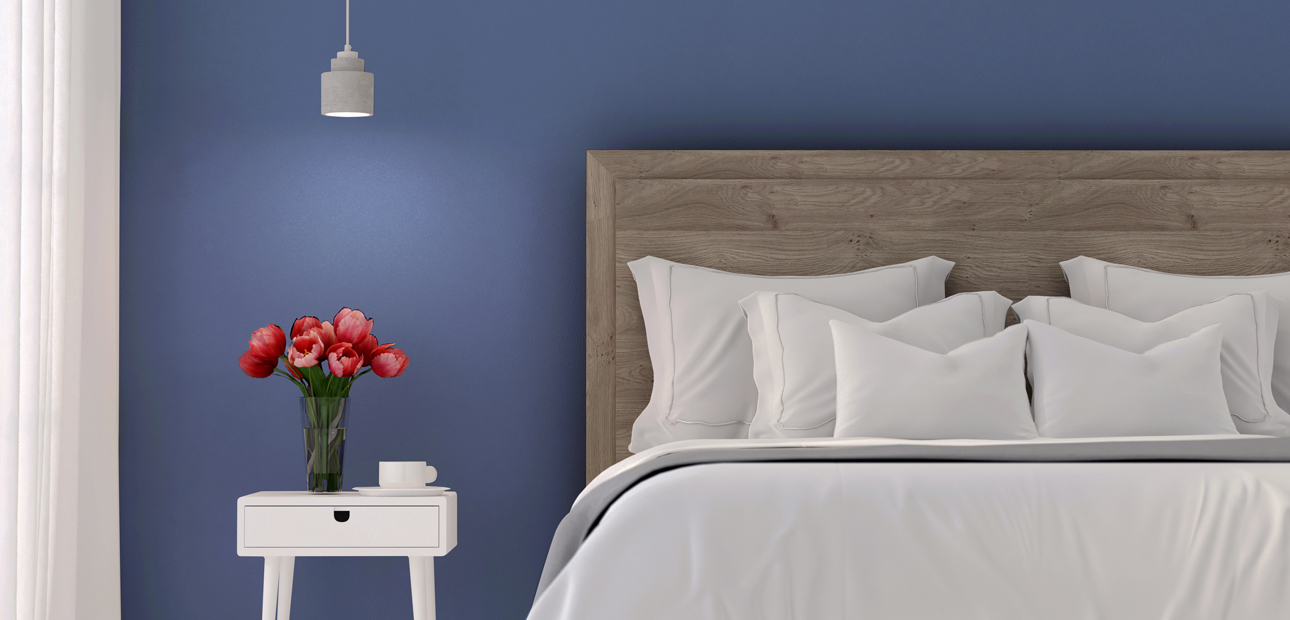What Is Water-Based Paint?
When it comes to buying paint, you may have two options — water-based paint and oil-based paint. When choosing which type of paint to use, it’s important to take a few factors into consideration. Knowing which formula is best for your surface can help lead to a paint job that looks great and lasts.
How Is Water-Based Paint Different From Oil-Based Paint?
Water-based paint is the norm for both interior and exterior paint. Wall paint like Rust-Oleum’s water-based Color Spark delivers a durable finish that stands up to washing – and even scrubbing, when mishaps occur.
Water-based paint has lower odor because it contains water, while oil-based paint contains petroleum-based solvents. It’s a good option for spaces with limited ventilation, like when you’re painting a room in your house.
Oil-based paints can be an option for smaller projects, like painting trim, doors or spindles. However, pros and DIYers alike often use water-based paint even on those surfaces for three main reasons:
- Less Odor. Unlike oil-based paint, water-based paint produces minimal odor. That makes it the go-to choice for indoor projects, such as painting rooms in a house.
- Faster Drying Time. Water-based paint dries faster than oil-based paint. This means you can apply additional coats in less time and complete your project faster.
- Easy Cleanup. Water-based paint can be cleaned up with just soap and water, making it faster and simpler to clean brushes, rollers or spills.
Is There Water-Based Spray Paint?
Water-based spray paint is a relatively new option on the shelves along with traditional oil-based spray paint. It includes Rust-Oleum Low Odor Spray Paint, which features similar qualities as brush-on water-based paint. This spray paint got its name because it emits 40% less odor than traditional spray paint, while still delivering great coverage and a durable finish.
Like many traditional spray paints, Low Odor Spray Paint can be used on wood, metal, glass and most plastics. The water-based formula allows you to add additional coats of paint at any time and dries within just a few hours. That means whether you’re refinishing furniture or giving home décor an updated look, you can complete your projects faster.
While water-based paint is commonly used on indoor objects, it’s important to note that spray paint – even if it’s water based – should only be sprayed outdoors or in a well-ventilated area, like an open garage. So, while water-based spray paint is a great option for backyard projects, if you want to paint something that’s not portable, a brush-on paint is the better option for surfaces or objects that aren’t portable.
Can Water-Based Paint Be Used on Outdoor Surfaces?
Exterior paint for siding, trim and doors can be purchased in water- and oil-based formulas. If you want to use a water-based brush-on paint on an outdoor surface, you’ll want to choose a product that is made specifically for exterior surfaces.
Some surfaces might require a primer for the paint to adhere. An oil-based primer like Zinsser Cover Stain is a good option for new wood, while a coat of water-based Zinsser Bulls Eye 1-2-3 can help a topcoat of water-based paint adhere to slick surfaces, like vinyl.
Water-based paint is also a popular choice for smaller DIY projects, like furniture and decor. Low Odor Spray Paint is a water-based paint that’s durable on both indoor and outdoor surfaces.
Can You Apply Water-Based Paint Over Oil-Based Paint?
Water-based spray paint can be applied over an existing coat of oil-based spray paint without any prep work. Just make sure the oil-based spray paint has dried for at least a day before recoating with water-based spray paint.
A spray primer can be used if you are painting a dark object a lighter color or if you need additional coverage or adhesion.
Water-based brush paint has been the norm for many years, so it’s most likely what’s already on your interior walls. However, an older home that hasn’t been painted in decades might have last been painted with an oil-base.
If you’re not sure whether the existing coat of wall paint is oil or water based, there’s a simple way to test it. Pour a little denatured alcohol on a clean cloth and rub it over the existing paint. If the paint color transfers onto the cloth, the paint is likely water based. If the cloth remains clean, that indicates it’s an oil-based paint.
If you determine that your existing paint is oil based, you’ll need to use a primer before applying water-based paint over it. Zinsser Bulls Eye 1-2-3 primer is compatible with oil- and water-based paint and will create a fresh surface so that your water-based paint adheres.
Can You Apply Oil-Based Paint Over Water-Based Paint?
When it comes to spray paint, you can apply oil-based spray paint over water-based spray paint as long as the water-based paint has been dry for at least 48 hours. If you’re painting a light color over a dark color, you may want to apply a coat of Rust-Oleum Stops Rust Universal Bonding Primer first. When painting an object a similar color, primer is likely not needed. However, can always apply a primer for additional coverage or adhesion.
When it comes to brush-on paint, in most cases you can use an oil-based formula over water-based paint. You may wish to first apply a coat of oil-based primer, like Cover Stain, to help the oil-based paint to adhere. Once the primer is dry, apply a thin coat of oil-based paint and let it dry before recoating.
By understanding the differences between water-based paint and oil-based paint, you’ll be better prepared to choose the formula that’s right for your project. Then, whether you paint with a brush, roller or spray can, you’ll be ready to transform your surface with confidence.

